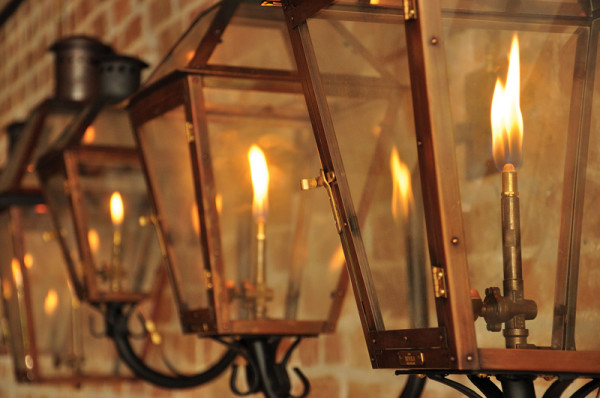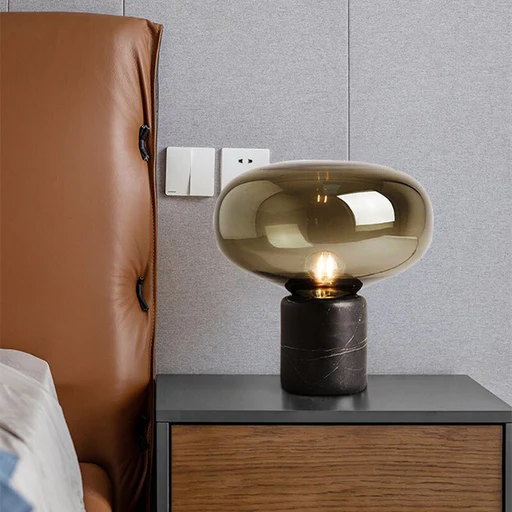Gas fixtures in a house, such as gas lamps or light fixtures, rely on burning natural gas or propane to produce light. These fixtures, prevalent in older homes before widespread electricity use, typically feature a mantle above the flame. The gas flame heats the mantle, causing it to glow brightly and emit light. The design and type of gas used can influence the color and intensity of the light.
Though less common today due to electric lighting, some homes still feature gas fixtures for decorative or historical reasons. Users should adhere to safety precautions, ensuring proper ventilation and maintenance for safe and efficient operation.
How do gas fixtures work?

These variables allow for the customization of lighting effects in spaces with gas fixtures, creating a warm and distinct ambiance.
Burning natural gas or propane
Gas fixtures operate by burning either natural gas or propane to generate light. Natural gas, a fossil fuel composed mainly of methane, is a common choice for these fixtures. Propane, a liquefied petroleum gas, is another option. The combustion of these gasses produces a flame, which is the fundamental mechanism for illuminating space.
Role of the mantle in the fixture
The mantle is a crucial component of gas fixtures, serving as the element that enhances and directs the light produced by the flame. Typically made of fabric or mesh material, the mantle is positioned above the flame. When the gas burns, the flame heats the mantle to a high temperature.
Furthermore, this intense heat causes the mantle to glow brightly, essentially becoming the source of the visible light emitted by the fixture. The design and composition of the mantle contribute significantly to the quality and characteristics of the light generated.
Impact on light production: color and intensity
The burning of natural gas or propane, combined with the radiant heat from the mantle, influences both the color and intensity of the light produced by gas fixtures. The type of gas used, as well as the specific design features of the fixture, can result in varying hues of light.
Additionally, the intensity of the light is affected by factors such as the size of the flame and the efficiency of the combustion process.
Why shift from gas to electric lighting?
The transition from gas fixtures to electric lighting marks a significant evolution in how we illuminate our spaces. The widespread adoption of electric lighting systems, driven by advancements in technology and infrastructure, rendered gas fixtures less common in contemporary homes.
Electric lighting offered advantages such as convenience, ease of use, and a broader range of design possibilities. The ability to control brightness and switch lights on and off with a simple mechanism contributed to the popularity of electric lighting, ultimately overshadowing the traditional use of gas fixtures.
How are gas fixtures used now?
Despite the dominance of electric lighting, gas fixtures continue to find a place in some homes, primarily for decorative or historical reasons. Homeowners with a penchant for vintage or period aesthetics may choose to preserve and showcase gas fixtures as part of the architectural and design heritage of their residences.
These fixtures, with their unique charm and historical significance, serve as both functional lighting elements and captivating artifacts that contribute to the character of a space.
Additionally, some restoration or preservation projects aim to maintain the authenticity of older homes by retaining original gas fixtures, providing a tangible link to the past while coexisting with modern lighting systems.
The persistence of gas fixtures in these contexts highlights their enduring appeal beyond mere functionality, capturing the essence of a bygone era within contemporary living spaces.
What are the key safety considerations for using gas fixtures?

Ensuring proper ventilation is paramount when using gas fixtures in a house. The combustion of natural gas or propane produces byproducts such as carbon monoxide, which can be harmful if not adequately ventilated.
Proper ventilation allows for the effective removal of these byproducts, preventing their accumulation within the living space. Adequate airflow is essential to maintain indoor air quality and protect occupants from potential health hazards associated with incomplete combustion. Homes with gas fixtures should have well-designed ventilation systems or appropriate openings to facilitate the safe expulsion of combustion byproducts.
Maintenance for safe and efficient operation
Regular maintenance is critical for the safe and efficient operation of gas fixtures. This includes inspecting and cleaning components such as burners, mantles, and gas lines to ensure they function correctly. Any signs of wear, corrosion, or damage should be promptly addressed to prevent potential safety hazards.
Additionally, checking for gas leaks and verifying the integrity of connections is essential to prevent the escape of flammable gasses. Homeowners should follow manufacturer guidelines and schedule routine inspections by qualified professionals to address any issues and ensure that gas fixtures are operating at their optimal performance levels.
FAQ’s
What is a fixtures and fittings list?
A fixtures and fittings list is a document detailing the permanent and removable items in a property, specifying what is included or excluded in a sale.
How are fixtures identified?
Fixtures are identified based on their attachment to the property, typically considered permanent additions that are affixed to walls, floors, or ceilings.
What are examples of fixtures in interior design?
Examples of fixtures in interior design include light fixtures, faucets, built-in cabinets, and ceiling fans—essentially, elements that are fixed in place.
Are gas light fixtures safe?
Gas light fixtures can be safe if proper ventilation and maintenance measures are in place to ensure the correct and secure operation of the fixtures.
What are fixtures in electricity?
Fixtures in electricity refer to devices that are permanently attached to a building’s structure, like light switches, outlets, and ceiling fans.
How do gas light fixtures work?
Gas light fixtures work by burning natural gas or propane, with the flame heating a mantle to produce light, creating a unique and historical ambiance.
Final Words
Gas fixtures used to be popular for lighting in older homes, but nowadays, we mostly use electric lighting. However, some people still keep gas fixtures in their homes because they like the old-fashioned look or want to preserve the history of their space.
It’s essential to make sure these fixtures are safe by having proper ventilation and doing regular maintenance. So, while electric lights are the norm, gas fixtures can still bring a touch of the past to our modern spaces if we take care of them properly.
